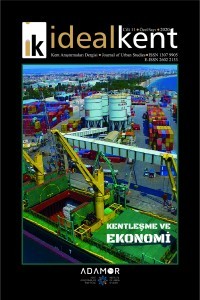
İDEALKENT
Yazarlar: Pınar Engincan
Konular:-
Anahtar Kelimeler:Poverty,Deprivation,Urban Deprivation,Urban Renewal,Social Exclusion
Özet: In Turkey since the 2000s perfected urban renewal implementations brought about poverty and social exclusion. In this scope of research in order to find solutions, suggestions tried to be developed to minimise the poverty and social exclusion problems of urban renewal implementations. On this account, the transformation of the cities and the consequences are explicated beginning from 1980s and how the parts of cities became the subject of the urban renewal projects is discussed. The poverty which has already come to existence is now deepened with the urban renewal implementations. Thence poverty, deprivation and social exclusion problems and the relations between them are examined. In order to overcome the poverty and social exclusion problems advanced proposals in the direction of developing urban politics by central and local governments.
Dergi editörleri editör girişini kullanarak sisteme giriş yapabilirler. Editör girişi için tıklayınız.